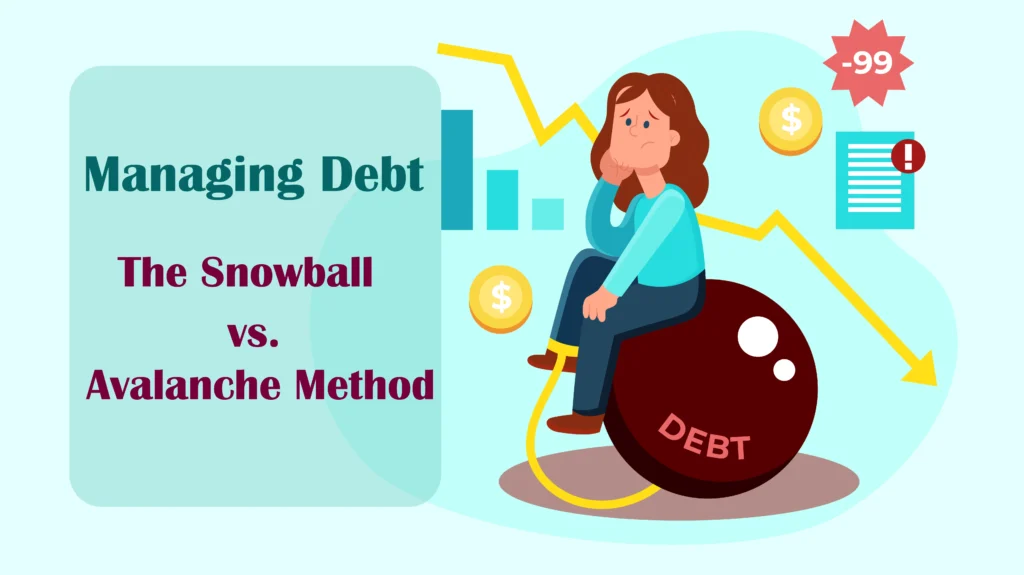How to Maximize 401(k) Contributions for a Comfortable Retirement
Building a comfortable retirement starts with maximizing 401(k) contributions. The earlier and more consistently you contribute, the more you can take advantage of tax savings, employer matching, and the magic of compound interest. But many people don’t fully utilize their 401(k) to its maximum potential, leaving money on the table and risking a less secure retirement.
In this guide, we’ll cover how to optimize your 401(k) contributions, manage your investments for growth, and avoid common mistakes to ensure you have a solid financial foundation for your retirement.
Why Need to Maximize 401(k) for Retirement
Your 401(k) retirement plan is one of the most powerful tools for building retirement wealth. It offers tax advantages, potential employer contributions, and long-term growth through investments. By maximizing your contributions and managing your 401(k) strategically, you can secure a more comfortable retirement and avoid the stress of financial shortfalls later in life.
The Power of Tax-Deferred Growth
One of the biggest advantages of a 401(k) is its tax-deferred status. When you contribute to a traditional 401(k), the money you invest grows without being taxed until you start withdrawing in retirement. This allows your contributions to compound over time, leading to significant growth.
Immediate Tax Benefits
Contributing to a 401(k) lowers your taxable income for the year. For example, if you earn $80,000 and contribute $10,000 to your 401(k), you’re only taxed on $70,000. This can reduce your overall tax liability, allowing you to save more efficiently.
Compound Growth Over Time
The earlier you contribute to your 401(k), the more you benefit from compound interest. Compound interest is when the interest you earn on your investments starts earning its own interest. Over decades, this creates exponential growth. Even small contributions made early in your career can grow significantly by retirement.
Employer Matching: Free Money for Your Retirement
Many employers offer to match a portion of your 401(k) contributions, which is essentially free money added to your retirement savings. If you don’t take full advantage of this, you’re leaving money on the table.
What is Employer Matching?
Employer matching means your company contributes to your 401(k) based on how much you contribute. For example, your employer may offer a 100% match on contributions up to 4% of your salary. If you earn $50,000 annually and contribute 4%, your employer will match your $2,000 contribution with an additional $2,000. It’s free money that can significantly boost your retirement savings.
How to Maximize Employer Contributions
The first step to maximizing your 401(k) is to contribute at least enough to get the full employer match. If your employer offers a match up to 4%, make sure you’re contributing at least 4% of your salary. Failing to do so is like leaving free money on the table. Over time, this missed contribution can add up to tens of thousands of dollars.
Step-by-Step Guide to Maximizing 401(k) Contributions
Let’s break down the steps to fully maximizing your 401(k), from making the most of employer matching to increasing your contribution rate.
Step 1: Contribute Enough to Max Out Employer Match
The first priority in any 401(k) strategy is to contribute enough to take full advantage of employer matching. Employer contributions are essentially “free” and provide an immediate return on your investment.
Taking Full Advantage of Employer Matching Programs
Most employers match a percentage of your contributions, often between 3% and 6% of your salary. Make it a goal to contribute at least enough to receive the full match, as this money can add significantly to your retirement balance over time.
Example of Missed Employer Contributions
Imagine earning $60,000 annually, with an employer offering a 100% match on up to 5% of your salary. If you contribute only 3% of your salary ($1,800), you’re missing out on $1,200 in free contributions. Over 30 years, the lost employer contributions and potential growth could mean missing out on $100,000 or more in retirement savings.
Step 2: Increase Contributions Over Time
If contributing the maximum immediately feels daunting, start small and increase your contributions over time. This way, you gradually boost your savings without feeling a major financial impact.
Start Small, Aim for Growth
Begin by contributing a manageable percentage of your salary—perhaps 4% or 5%—and increase it gradually. Aim to raise your contribution by 1% each year or whenever you receive a raise. Small, consistent increases can add up over time.
Setting Up Automatic Contribution Increases
Many 401(k) plans allow you to set automatic contribution increases. These increases can be tied to your annual salary raise, ensuring that you steadily save more each year without noticing a significant change in your paycheck. Over the long term, these increases can substantially grow your retirement savings.
Step 3: Max Out Annual Contribution Limits
For those looking to aggressively save for retirement, striving to hit the IRS’s annual contribution limits is a great strategy. The contribution limit for 2024 is $23,000 for individuals under 50 and $30,500 for those 50 and older.
Understanding 401(k) Contribution Limits
Each year, the IRS sets contribution limits for 401(k) plans. For 2024, you can contribute up to $23,000 if you’re under 50, and those over 50 can make an additional catch-up contribution of $7,500. These limits allow high earners to save more aggressively for retirement, while benefiting from tax advantages.
Catch-Up Contributions for Those Over 50
If you’re over 50, take advantage of catch-up contributions to increase your savings in the years leading up to retirement. These additional contributions can help boost your retirement fund significantly, especially if you’re behind on your savings goals.
Best Practices for Growing Your 401(k) Balance
Maximizing contributions is only one part of the equation. To build a robust retirement portfolio, it’s essential to choose the right investments and manage your 401(k) wisely.
Step 4: Choose the Right Investment Mix
Your investment strategy should be aligned with your age, risk tolerance, and retirement timeline. Diversifying your 401(k) portfolio is key to managing risk and ensuring long-term growth.
Asset Allocation Based on Age and Risk Tolerance
Younger workers with longer time horizons can afford to be more aggressive with their 401(k) investments, focusing on stocks that have higher growth potential. As you age, shifting towards more conservative investments like bonds can protect your portfolio from market volatility. A typical rule of thumb is to reduce your stock allocation by your age. For instance, if you’re 40, 60% of your portfolio should be in stocks, with the remaining 40% in bonds or other lower-risk assets.
Rebalancing Your 401(k) Portfolio
Markets fluctuate, and your investment allocation may drift from its original target. Rebalancing your 401(k) annually helps ensure you maintain the desired mix of stocks, bonds, and other assets. This strategy can reduce risk and keep your portfolio aligned with your retirement goals.
Step 5: Take Advantage of Roth 401(k) Options
Many employers offer both traditional 401(k) and Roth 401(k) options. Understanding the differences between the two can help you make tax-smart contributions.
Traditional vs. Roth 401(k)
- Traditional 401(k) contributions are made with pre-tax dollars, which lowers your taxable income today, but withdrawals are taxed in retirement.
- Roth 401(k) contributions are made with after-tax dollars, meaning you don’t get an immediate tax break, but withdrawals in retirement are tax-free.
Both accounts have their advantages. Younger workers, who may be in a lower tax bracket now, may benefit from the Roth option. In contrast, those who expect to be in a lower tax bracket during retirement may prefer the traditional 401(k).
Tax Diversification for Retirement
To provide flexibility in retirement, consider contributing to both a traditional and a Roth 401(k). This strategy allows you to manage your tax liability more effectively, giving you the option to withdraw from the account that provides the most tax benefits based on your situation.
Step 6: Avoid Early Withdrawals and Loans
Taking money out of your 401(k) early can derail your retirement plans. Withdrawals before age 59 ½ typically result in a 10% penalty plus income taxes, shrinking your savings significantly.
Penalties and Taxes on Early Withdrawals
The penalty for early 401(k) withdrawals is steep. Not only will you owe income tax on the amount withdrawn, but you’ll also face a 10% early withdrawal penalty. For example, withdrawing $10,000 early could leave you with only $6,000 after taxes and penalties. This reduces the long-term growth potential of your account and sets back your retirement timeline.
The Long-Term Cost of 401(k) Loans
While it may be tempting to borrow from your 401(k) through a loan, doing so can hurt your long-term growth. When you take out a loan, your money is no longer compounding in the market, and if you leave your job before repaying the loan, you’ll have to repay the balance quickly or face penalties and taxes.
Maximizing 401(k) Contributions Based on Your Age
Your approach to maximizing 401(k) contributions should change as you move through different stages of life. Here’s how to tailor your strategy by age.
401(k) Strategies in Your 20s and 30s
Younger savers have the advantage of time. Focus on maximizing your contributions as early as possible and investing in high-growth assets like stocks.
Take Advantage of Time and Compound Interest
In your 20s and 30s, you have decades before retirement. By starting to contribute early, you give your investments plenty of time to grow and compound, turning small contributions into substantial savings.
Aggressive Asset Allocation for Long-Term Growth
With a long time horizon, you can afford to take more risks by allocating a higher percentage of your portfolio to stocks, which offer higher potential returns. As you near retirement, you can gradually shift towards more conservative investments.
401(k) Strategies in Your 40s
In your 40s, focus on increasing your contributions and fine-tuning your investment strategy to balance growth and risk.
Catch-Up on Contributions and Adjust Asset Allocation
If you’re behind on your savings goals, now is the time to increase your contributions. Consider rebalancing your portfolio to ensure you’re maintaining an appropriate mix of growth-oriented and conservative investments as you move closer to retirement.
Focus on Growing Your Savings to Maximize Returns
Your 40s are typically your peak earning years, making it an ideal time to max out your contributions. Increasing your savings rate during this period will have a significant impact on your retirement balance.
Common Mistakes to Avoid When Managing Your 401(k)
While maximizing contributions is important, it’s also crucial to avoid common mistakes that can hinder your 401(k)’s growth.
Failing to Adjust Contributions with Income Growth
As your salary increases, so should your contributions. Failing to adjust your 401(k) contributions in line with your income can result in missed savings opportunities.
Missing Out on Opportunities to Save More
Whenever you get a raise or bonus, consider increasing your 401(k) contributions. This ensures that your savings keep pace with your growing income, helping you reach your retirement goals faster.
Overlooking Fees and Costs
High fees can erode your 401(k)’s growth over time, reducing the overall amount you’ll have in retirement.
The Impact of High Fees on Long-Term Growth
Many 401(k) plans include fees for managing your investments. Over decades, even small fees can add up, costing you tens of thousands of dollars. Be mindful of the expense ratios on your funds and look for low-cost options like index funds.
Not Rebalancing Your Portfolio Regularly
Your investment allocation can drift over time, exposing you to more risk than intended or causing you to miss out on growth opportunities.
The Importance of Staying on Track
Review and rebalance your 401(k) at least once a year to ensure your investments remain aligned with your risk tolerance and retirement timeline. This helps reduce risk and optimize growth as your needs change.
How to Monitor and Adjust Your 401(k) for Maximum Growth
Regularly reviewing and adjusting your 401(k) contributions and investments is key to ensuring you’re on track for retirement.
Review Your 401(k) Annually
Set aside time each year to review your 401(k), ensuring your contributions, employer match, and investments are all working together to build a secure retirement.
Annual Review Checklist
- Are you contributing enough to get the full employer match?
- Are your investments aligned with your goals and risk tolerance?
- Have you increased your contributions with salary raises or bonuses?
Adjust Based on Life Changes
Life changes like marriage, children, or job changes may require adjustments to your 401(k) contributions or investment strategy.
Life Events That May Require 401(k) Adjustments
Major life events can impact your financial needs. For example, starting a family might prompt you to save more for retirement, or a job change might offer new 401(k) options or employer matches. Stay flexible and adjust your plan as needed.
Conclusion: Maximize Your 401(k) Today for a Comfortable Tomorrow
Maximizing your 401(k) contributions is one of the best ways to secure a comfortable retirement. By contributing consistently, taking full advantage of employer matches, diversifying your investments, and avoiding common mistakes, you can build a strong financial foundation for the future. Start today by reviewing your contributions and implementing these strategies to ensure a secure and fulfilling retirement.












